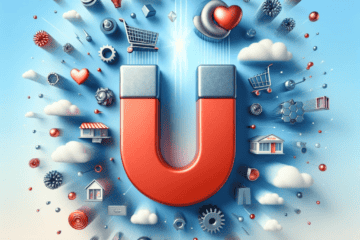Many businesses today are turning to Customer Relationship Management (CRM) solutions as a strategic tool to enhance customer retention.
By utilizing CRM software, companies can effectively manage and analyze customer interactions, streamline communication processes, and personalize customer experiences.
Let’s take a look into the myriad benefits associated with utilizing CRM solutions for fostering long-term relationships with customers, increasing customer loyalty, and ultimately driving business growth.
- Key Takeaways:
- CRM solutions enhance understanding of customers, fostering personalized interactions and stronger bonds.
- CRM analysis of customer data aids in identifying tailored retention strategies and offers.
- CRM tools enable upselling and cross-selling to existing customers, boosting sales and revenue.
- CRM systems facilitate efficient, multi-channel communication with customers, ensuring prompt and personalized interactions.
- CRM solutions help track and resolve customer issues quickly, improving service quality and customer loyalty.
Understanding CRM and Customer Retention
Customer Relationship Management (CRM) solutions are essential technologies that aid businesses in managing and analyzing interactions with both current and potential customers.
These solutions provide a centralized platform for customer data, which streamlines communication and enhances the overall customer experience. By consolidating various points of contact into one system, CRMs allow for more cohesive and strategic handling of customer relationships.
Customer retention plays a pivotal role in the long-term success of a business. It involves engaging existing customers to encourage continued purchases of products or services.
This focus on retention is vital as it helps establish a loyal customer base. When customers feel valued and understood, they are more likely to remain with a company, thereby increasing their lifetime value and contributing to sustained profitability.
By utilizing CRM solutions, businesses can more effectively implement strategies that promote customer retention. These systems analyze customer behavior and preferences, providing insights crucial for developing personalized interactions and offers.
Such tailored approaches not only improve customer satisfaction but also strengthen their connection to the brand, driving long-term loyalty and revenue growth.
Strategic Benefits of CRM Solutions
CRM solutions offer strategic advantages by streamlining and enhancing the management of customer relationships. By centralizing customer data, these systems enable businesses to improve engagement, retention, and overall service efficiency, contributing significantly to long-term success.
1. Comprehensive Customer Insights
CRM solutions provide a unified view of each customer by consolidating interactions, preferences, and purchase histories.
This comprehensive insight allows businesses to tailor communications and marketing strategies, leading to better customer engagement and improved retention rates.
2. Enhanced Customer Service and Support
With CRM systems, businesses can centralize tracking of customer inquiries, issues, and feedback, ensuring quick and effective responses.
These systems facilitate the analysis of customer interactions, enabling proactive problem resolution and personalized service, which in turn boosts customer loyalty and lifetime value.
3. Automation of Routine Tasks
CRM solutions automate everyday tasks such as data entry, lead management, and customer follow-ups, enhancing operational efficiency.
This automation frees up staff to focus on more strategic and customer-centric activities, thereby improving service levels.
4. Seamless Integration with Business Tools
CRM systems can integrate with various software applications like email platforms, accounting software, and social media, offering a unified view of customer data.
This holistic approach enhances operational efficiency and aids in better decision-making across departments.
5. Personalized Customer Experiences
By synchronizing data across different systems in real time, CRM integration ensures a consistent and personalized customer experience.
This synchronization improves communication and collaboration across teams, leading to enhanced customer satisfaction and retention.
6. Increased Sales Opportunities
CRM solutions help identify upselling and cross-selling opportunities by analyzing customer purchase patterns and preferences.
This strategic insight allows businesses to offer relevant products and services, potentially increasing sales and revenue.
7. Improved Data Security
Modern CRM systems offer robust security features to protect sensitive customer information.
Secure handling of data not only complies with privacy regulations but also builds trust with customers, fostering a safer and more reliable business environment.
Measuring Success with CRM Solutions
To effectively measure the success of customer retention efforts, tracking key performance indicators (KPIs) such as customer lifetime value, retention rate, churn rate, and customer satisfaction scores is crucial.
Regular analysis of these metrics allows businesses to identify trends, measure progress, and make informed decisions to enhance their strategies.
CRM solutions facilitate this by providing a detailed view of customer interactions, purchase history, and feedback, which are vital for understanding customer behavior and preferences.
The insights gained from CRM systems enable businesses to design more effective customer retention strategies. By analyzing the gathered data, companies can uncover patterns that guide personalized efforts to retain customers.
This proactive approach to engaging customers and anticipating their needs helps tailor strategies that improve loyalty and satisfaction.
Leveraging these KPIs and insights allows businesses to optimize their customer retention tactics, fostering long-lasting relationships and driving sustainable growth.

Common Challenges and Best Practices
In today’s competitive business environment, effectively implementing CRM solutions is essential but comes with its unique set of challenges.
These challenges can obstruct a business’s ability to fully leverage CRM technology for customer retention and overall success. Understanding these common hurdles and adopting best practices are crucial steps toward maximizing the benefits of CRM systems.
A. Resistance to Change
This is a common issue in organizations where employees are accustomed to certain workflows and may be skeptical or fearful of new technologies.
This resistance can lead to low adoption rates, diminished efficiency, and potentially failed implementations. Without full buy-in from the team, the CRM system cannot be utilized to its full potential, leading to wasted resources and opportunities.
To effectively manage and overcome resistance to change, consider these practical steps.
- Stakeholder Engagement: Involve key stakeholders early in the decision-making process to garner support and gather input.
- Clear Communication: Regularly communicate the benefits and progress of the CRM implementation to all users.
- Training Programs: Implement comprehensive training sessions that are easy to understand and relevant to each user’s role.
- Feedback Loops: Establish channels for feedback to involve users in the ongoing development and optimization of the CRM system.
- Change Champions: Identify and empower enthusiastic users who can act as change champions within the organization.
Effective change management is key to the successful adoption of CRM systems.
B. Data Integrity Issues
These refer to the accuracy, completeness, and reliability of data within the CRM system.
Inconsistent data entry, outdated information, and duplicate records can lead to poor customer insights, misinformed decision-making, and decreased user trust in the system. These issues undermine the CRM’s effectiveness, making it difficult to execute targeted marketing strategies and sales initiatives.
To ensure high data quality and reliability, consider implementing these strategies.
- Regular Audits: Conduct regular audits to check for inaccuracies and inconsistencies in the data.
- Data Entry Standards: Establish and enforce strict guidelines for how data is entered and maintained.
- Duplicate Data Management: Use tools and techniques to identify and merge duplicate records in the system.
- Automated Data Cleansing: Invest in automated tools that help maintain the accuracy and cleanliness of data.
- Ongoing Training: Continually train staff on the importance of data quality and the correct procedures for data entry.
Maintaining high data integrity is essential for leveraging CRM to drive effective decisions and strategies.
C. Inadequate User Training
This means that employees are not properly educated on how to use the CRM system effectively.
Without sufficient training, users may feel frustrated, which can result in low adoption rates, inefficient use of the CRM system, and potential data errors that compromise customer management strategies.
The lack of adequate training can hinder the system’s effectiveness, causing delays and reducing the potential benefits of the CRM.
To combat inadequate training and enhance user proficiency, implement the following tips.
- Role-Specific Training: Provide training sessions tailored to the specific needs and roles of different users within the organization.
- Continuous Learning: Offer ongoing training opportunities to cover new features and updates, reinforcing skills and knowledge over time.
- Interactive Resources: Develop interactive training materials such as videos and tutorials that users can access at their convenience.
- Training Metrics: Measure the effectiveness of training programs through user feedback and performance assessments.
- Support Desk: Establish a help desk or support system for users to resolve issues and get answers to CRM-related queries quickly.
Proper training is critical for ensuring that all users are competent and confident in using the CRM system.
D. Lack of Customization
This refers to a CRM system that does not align well with the specific processes and needs of a business.
A one-size-fits-all approach can lead to inefficiencies, as the system may not adequately address the unique aspects of the business’s operations or customer interactions.
This misalignment can frustrate users, reduce productivity, and ultimately limit the CRM’s effectiveness in enhancing customer engagement and retention.
To fully harness the benefits of CRM, it’s important to tailor the system to fit your specific business requirements.
- Needs Assessment: Conduct a thorough analysis of business needs and user requirements before customization.
- Modular Design: Opt for a CRM with modular features that can be customized and scaled according to business growth and changes.
- User Input: Involve end-users in the customization process to ensure the system meets their daily operational needs.
- Custom Reporting: Develop custom reports that provide relevant insights and data critical for decision-making.
- Integration Capabilities: Ensure the CRM can integrate seamlessly with existing tools and software used by the business.
Customizing the CRM to meet specific business needs is crucial for maximizing its utility and ensuring user satisfaction.

Final Thoughts | Unlock the Power of Precision
Embracing CRM solutions is a game-changer for businesses aiming to secure a competitive edge and forge lasting customer relationships.
These systems serve as a centralized hub, enhancing communication and customer satisfaction while boosting loyalty and driving revenue growth. By leveraging detailed customer data and analytics, organizations gain the ability to anticipate needs and tailor marketing efforts effectively.
This targeted approach not only retains customers in a fiercely competitive market but also deepens their connection with your brand.
As the business landscape evolves, investing in a robust field sales management software becomes essential. Harness the full potential of CRM and turn every customer interaction into an opportunity for growth.
Take action today and elevate your field sales strategy with cutting-edge CRM technology.






